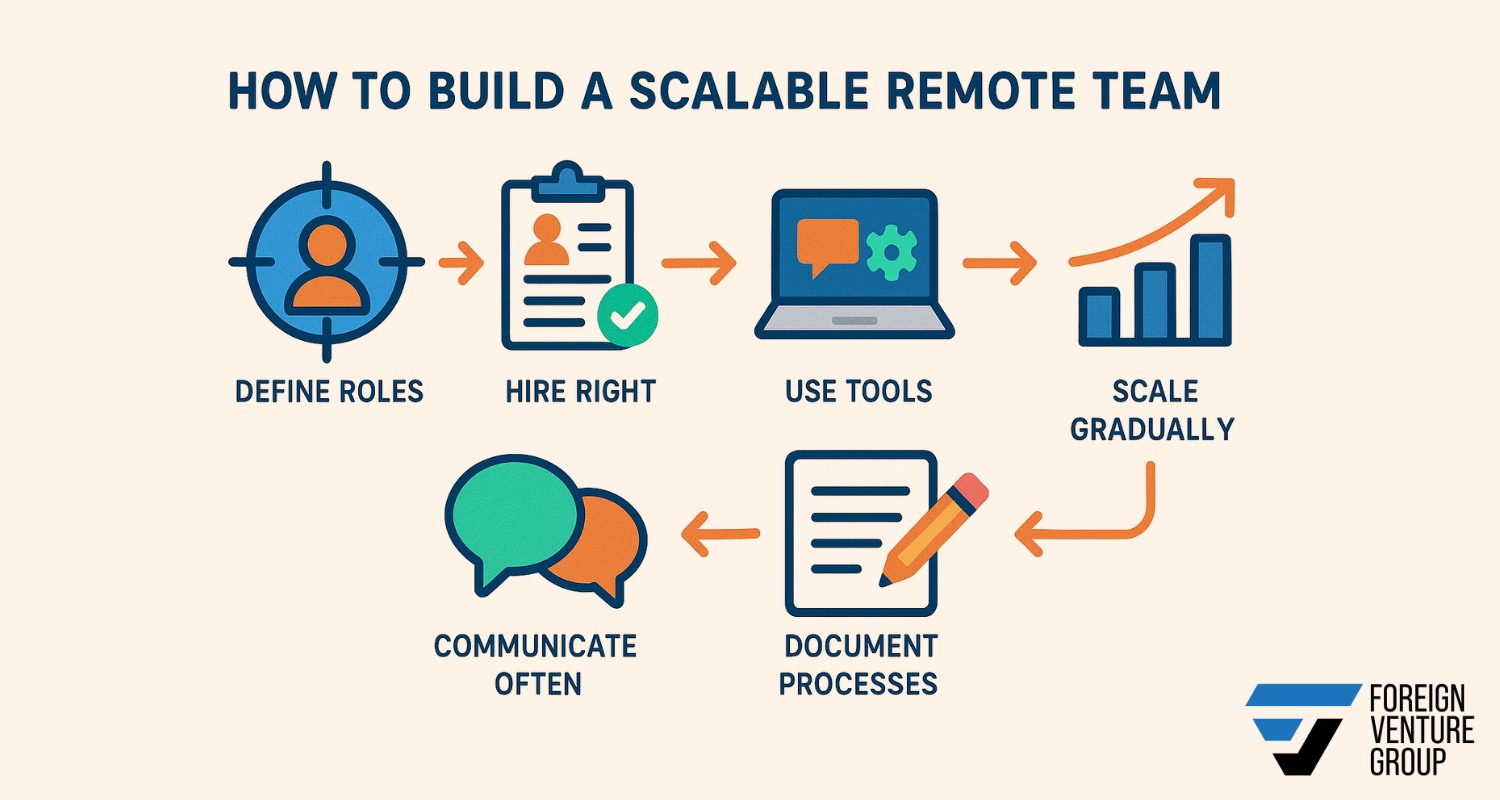Running a business in Canada today means you have more options than ever before. One of the biggest benefits? You don’t need everyone sitting in the same office to succeed. In fact, many of the most successful companies are run by remote teams spread across cities, provinces, and even countries. So let’s start discussing more about how to build scalable remote teams!
But how do you build a remote team that actually works well together and grows with your business?

Let’s break it down in a simple, friendly way.
Contents
What Does a “Scalable Remote Team” Mean?
Imagine building a puzzle. At first, you only need a few pieces. As the picture grows, you need more. A scalable remote team is like that puzzle. It starts small but is built in a way that you can keep adding new people without everything falling apart.
The key is to plan smart, choose the right people, and set up systems that support growth.
Why More Canadian Businesses Are Going Remote
In 2023, over 28% of Canadian employees worked mostly from home, according to Statistics Canada.
And businesses are embracing this shift for good reason:
- Lower costs (no need to rent big office spaces)
- Larger talent pool (you can hire from anywhere, not just your city)
- Happier employees (people love skipping long commutes)
Companies like Shopify have gone fully remote and are still thriving. If they can do it, so can you.
Step 1: Start with Clear Roles and Expectations
Before you hire anyone, get clear on what you actually need. Think of it like building a hockey team. You can’t have five goalies and no one to score goals.
Write down what each role will do, how they’ll work with others, and what success looks like. This keeps everyone on the same page.
Tip: Start with roles like virtual assistants, customer support, or social media managers. These are common for Canadian startups and easy to outsource.
Step 2: Hire the Right People (Not Just the Cheapest)
It might be tempting to hire someone just because they have the lowest rate. But that can cost more in the long run. You want people who:
- Communicate well
- Are self-motivated
- Understand your goals
- Fit your company culture
Real-life example: One Toronto startup hired three low-cost freelancers from different countries. The work was fine, but deadlines were missed, and there was confusion due to time zones and unclear instructions. They switched to hiring one strong virtual assistant who fit their culture and things got much smoother.
Step 3: Use Tools That Make Remote Work Easy
Technology is your best friend here. You don’t need fancy or expensive software. Start with:
- Slack or Microsoft Teams for communication
- Trello or ClickUp for task management
- Zoom or Google Meet for face-to-face meetings
Keep it simple. The goal is to stay connected and know who’s doing what.
Step 4: Build a Communication Rhythm
Remote work can feel lonely if people don’t talk regularly. That’s why a “communication rhythm” is so important.
It just means setting up a regular way of talking and checking in.
For example:
- Daily or weekly check-ins
- A shared chat where people can ask quick questions
- Monthly team hangouts (yes, even virtual coffee chats help!)
It builds trust and keeps everyone motivated.
Step 5: Document Everything
This might sound boring, but it’s a game-changer.
Whenever someone learns how to do something well, ask them to write it down. Make a simple guide. That way, when you hire someone new, they don’t need to ask a million questions. They just follow the guide.
It’s like handing someone a map instead of letting them wander around.
Step 6: Be Flexible but Set Boundaries
Working remotely doesn’t mean people should work 24/7. In fact, setting clear hours, respecting time zones, and encouraging breaks can boost productivity.
Did you know? A study from Owl Labs found that remote workers are 22% happier than on-site workers and stay longer at their jobs.
Happy teams stay longer, work better, and cost less in turnover.

How to Know It’s Time to Scale
If you’re constantly doing tasks someone else could do or if your current team is stretched too thin, it’s time to grow.
Start small. Add one new person. See what changes. If it works, add more. Just like building Lego. One block at a time.
The Takeaway: You Don’t Have to Do It Alone
Building a remote team can feel overwhelming at first. But you don’t need to figure it all out yourself.
Foreign Venture Group (FVG) is here to help. We specialize in helping Canadian businesses build smart, scalable remote teams that actually get results.
Whether you need virtual assistants, marketers, or developers, our team helps you:
- Find the right people
- Set up smooth systems
- Grow without stress
Ready to build a team that grows with you?
Visit thefvg.com and let’s make it happen. Your dream team might just be one conversation away!

